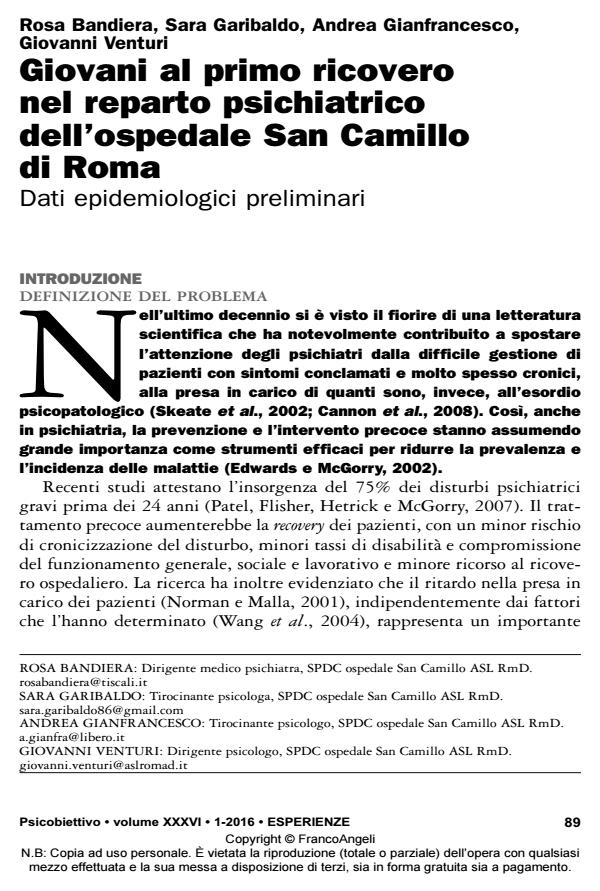Youth at their first hospitalization in the San Camillo Psychiatric ward in Rome. Preliminary epidemiological data
Journal title PSICOBIETTIVO
Author/s Rosa Bandiera, Sara Garibaldo, Andrea Gianfrancesco, Giovanni Venturi
Publishing Year 2016 Issue 2016/1
Language Italian Pages 18 P. 89-106 File size 313 KB
DOI 10.3280/PSOB2016-001006
DOI is like a bar code for intellectual property: to have more infomation
click here
Below, you can see the article first page
If you want to buy this article in PDF format, you can do it, following the instructions to buy download credits

FrancoAngeli is member of Publishers International Linking Association, Inc (PILA), a not-for-profit association which run the CrossRef service enabling links to and from online scholarly content.
The delayed access to treatment represents one of the biggest challenges to cure young adults with early psychiatric disorders. This delay, too often observed, has several causes. One of them is patients’ unexpressed help seeking, influenced by cultural and historical reasons, from pathology characteristics and by the organization of psychiatric hospitals and services. The goal of this study is to assess how psychiatric disorders that start at an early age can determine serious invalidity and lack of self-sufficiency if not treated timely and properly. Epidemiological data will be used to support this analysis. The network organization of DSM and ASL Rome D allow the activation of services also during the recovery of a youth with acute disorders at the Hospital psychiatric ward, which is frequently the first place where an early pathology is identified.
Keywords: Departmental Network; Mental Disorder Onset; Early Intervention; Epidemiological Data; First Hospitalization; Hospital Psychiatric Ward.
Rosa Bandiera, Sara Garibaldo, Andrea Gianfrancesco, Giovanni Venturi, Giovani al primo ricovero nel reparto psichiatrico dell’ospedale San Camillo di Roma Dati epidemiologici preliminari in "PSICOBIETTIVO" 1/2016, pp 89-106, DOI: 10.3280/PSOB2016-001006